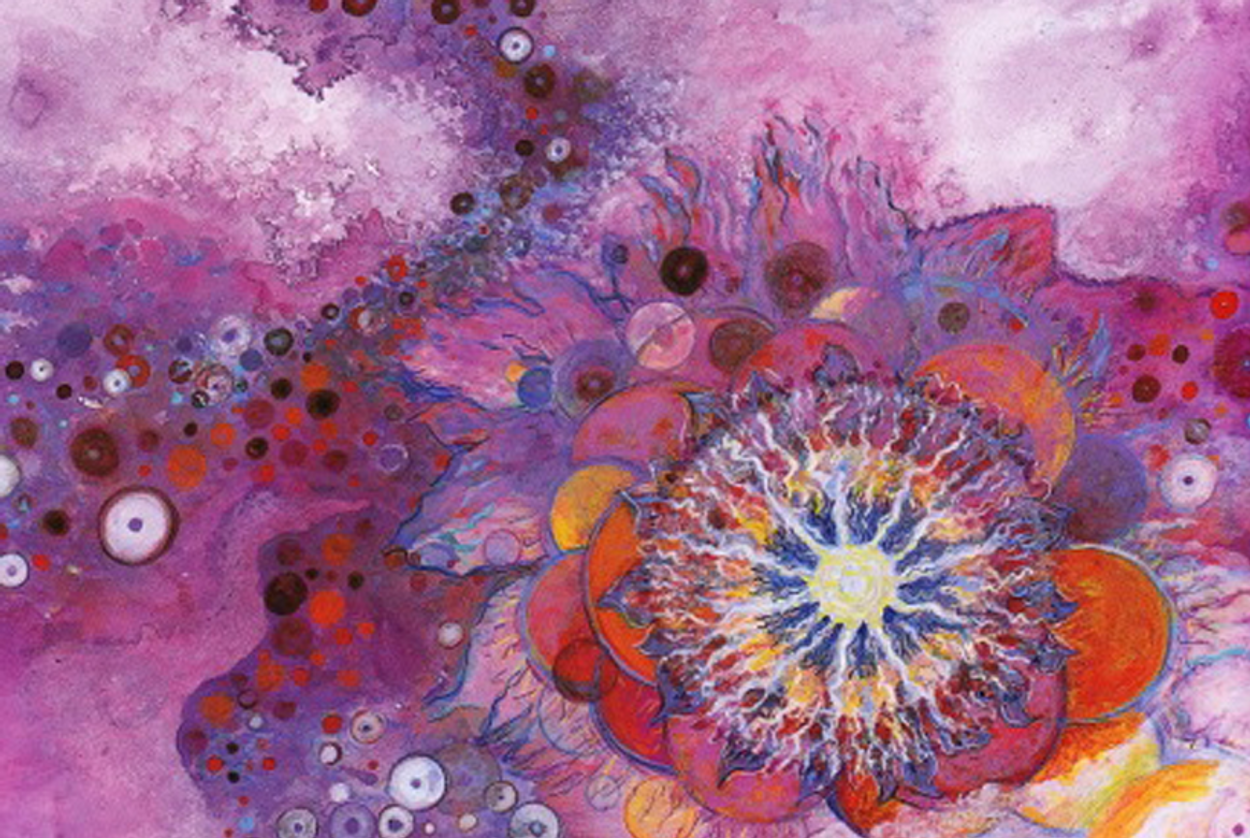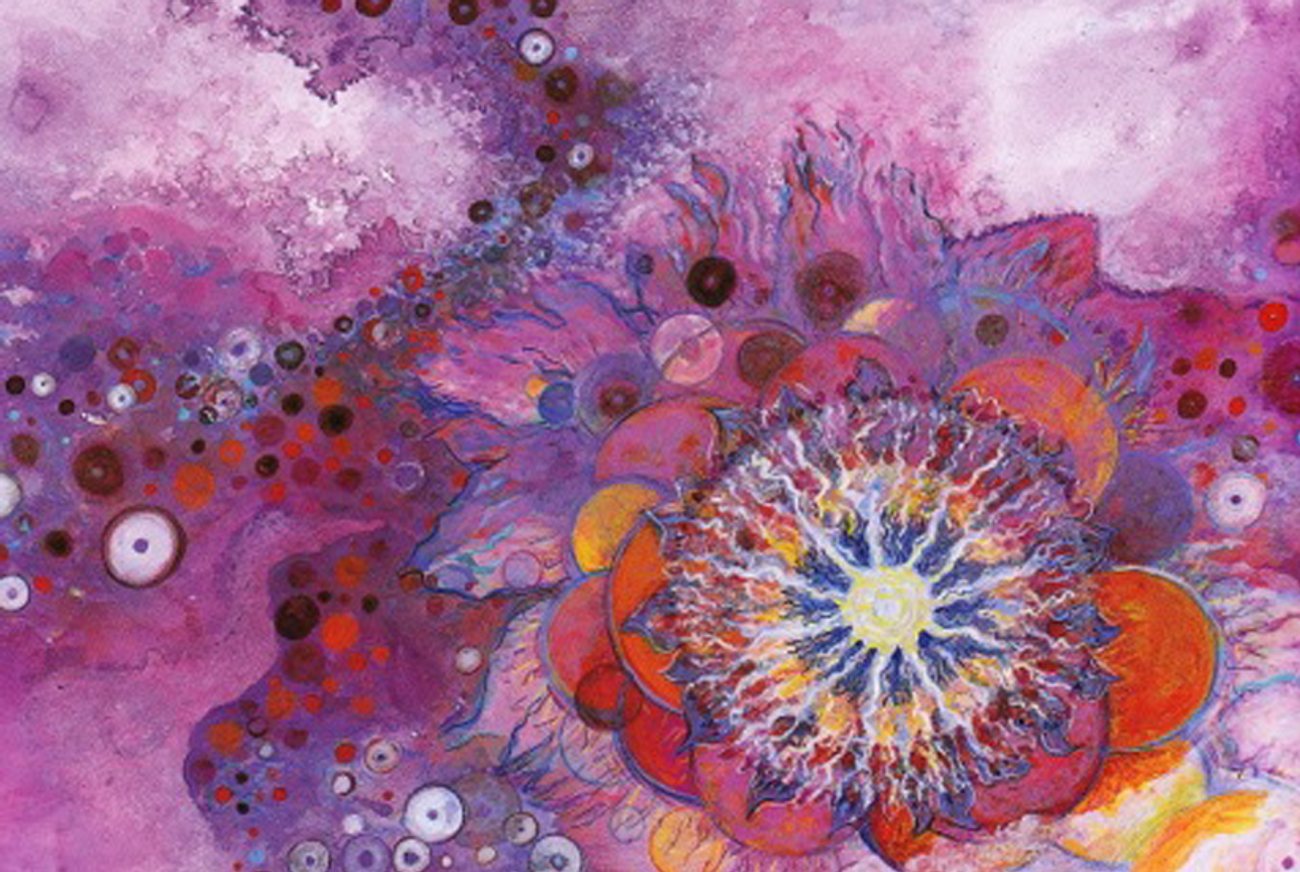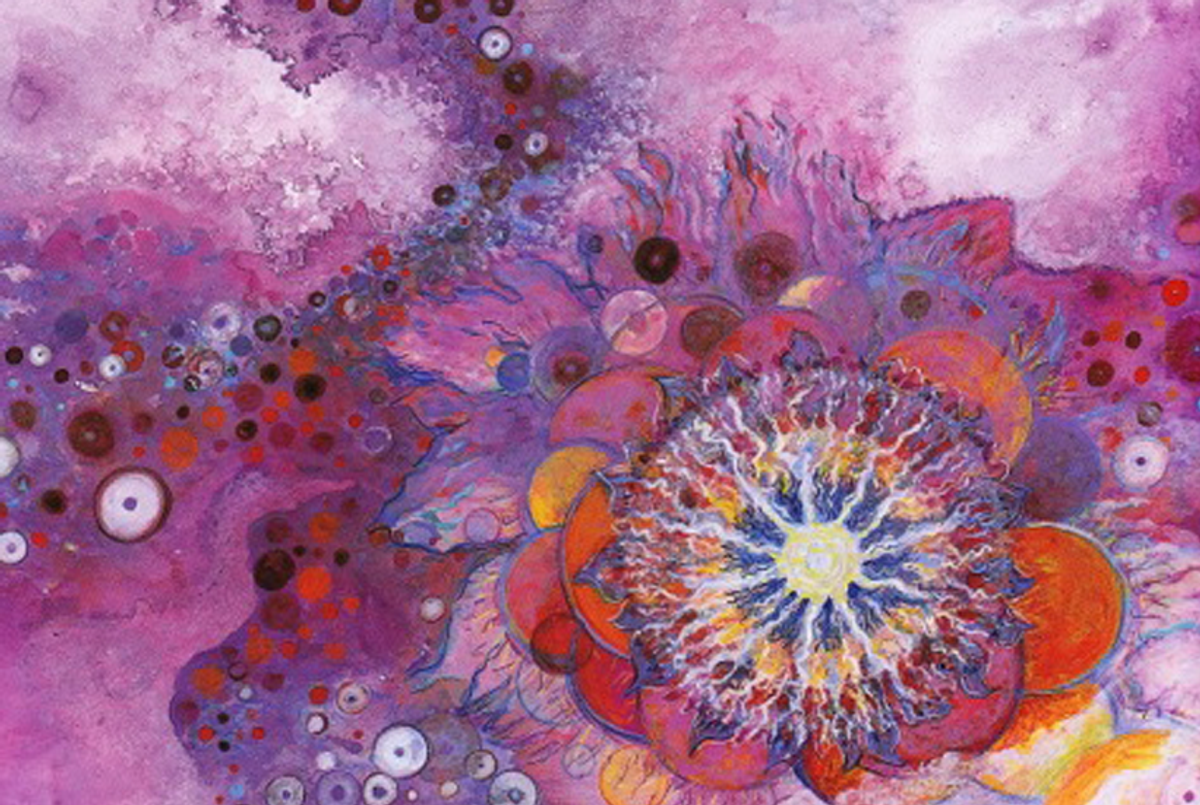Your Kids Love ‘Cosmos.’ Keep Them Interested in Science With These Books.
The relaunched TV series can inspire children to read more about the universe. Here are some great titles to get them started.





OK, so my kids didn’t find the first episode of Cosmos as exciting as 2-and-a-half-year-old Delilah did. In fact, when I suggested we watch it as a family, chirping, “It’ll be fun!” my 12-year-old daughter Josie replied, “You and I have very different definitions of fun.”
Nevertheless, I got everybody’s tuchus on the couch. And we all found the show inspiring. There were fabulous panoramas of dazzling galaxies, beautiful poetic narration, suspenseful animated segments … and how can you not adore host Neil DeGrasse Tyson, badass of science? (By the way, I met Tyson in 1999, when he was a guest on a talk show I wrote for. I have never encountered a more charismatic human being in my entire life.) (With the possible exception of Bill Clinton, whom I met for two seconds on an airplane.) (Thus concludes the name-dropping portion of this column.)
So yeah, my tweens liked the show. I can’t help wondering, though, if I’d made an effort to get them star-watching as preschoolers, would they have been absolutely enthralled, like Delilah? I have no clue. I do worry that I’ve passed my own science ambivalence on to them: I took only biology in high school (it was the bare minimum I could get away with) and nearly crashed and burned in (mandatory) science and math classes in college. Do not be like me! Get your kids interested in science early. If you have kids in your life who are younger than my daughters, here are some kid-lit suggestions for getting them enraptured by cosmology without having to bribe them with Ben & Jerry’s Salted Caramel Core. The gooey caramel center is like the black hole in the center of the Milky Way—it sucks you in and there is no escape. Metaphor. (I did better in English class.)
Now, perhaps you’re surprised that there are truly science-minded picture books about the origins of space and time. Oh, there are. The trick is finding ones that are simultaneously beautiful, un-boring, deep, engaging, and brainy.
You may also wonder (though if you’re reading this, I hope you don’t) whether books about the beginnings of the universe conflict with Jewish faith. I’d argue that science and religion are never incompatible. Not if you’re doing both things right. If you believe that God is infinitely complex and capable of miracles, how can you be threatened by learning exactly how intricate the world is? If you accept our self-conception as the people of the book, it’s pretty arrogant to try to slam God between its pages. You really want to confine the notion of divinity to what the ancients understood to be true or what people who are knee-jerkily fearful of change insist on clinging to? Please. You’d make your co-religionist Albert Einstein cry.
Some of these children’s books are direct, and some are more oblique and elliptical. Most are aimed at very young readers and thus might capture them before we grownups have taught them that intellectual pursuits are for nerds, that hard-to-answer questions aren’t worth asking, that real life and experiential learning are irksomely messy. As Tyson put it in an interview, “Kids are never the problem. They are born scientists. The problem is always the adults. They beat the curiosity out of kids.”
My favorite recent science book for children is You Are Stardust, by Elin Kelsey, fabulously illustrated by Soyeon Kim. Its opening lines:
Every tiny atom in your body
came from a star that exploded
long before you were born.
You started as a single cell.
So did all other creatures on Planet Earth.
Like fish deep in the ocean,
you called salt water home.
You swam inside the salty sea
of your mother’s womb.
Inside your brain, electricity
stronger than lightning
powers your every thought.
The book goes on to talk about the way our bodies are constantly changing, just as the universe is. We replace our skin 100 times by age 10; we grow entirely new skeletons throughout our lives. It’s poetry and it’s science, and Kim’s artwork—a series of dioramas made in wooden boxes, with flowers and sculptures and tiny drawings suspended by fishing line—has all the wonder and mystery of the text. Paint splashed on acetate conveys the energy of a star exploding into being. So beautiful, I got a little weepy. (A link in the back of the book sends you to the book’s website for more information; I could quibble that I wish the scientific elaborations were actually an afterword in the book itself.) A 3-year-old could understand this book in his own way, and it’s a great leaping-off-point for discussion with an older kid.
Infinity and Me, by Kate Hosford, illustrated by Gabi Swiatkowska, is also aimed at the very youngest scientists. (Mathematicians and philosophers, too.) It opens with a little girl, too excited by her brand-new red shoes to sleep, going out onto her lawn and looking at the night sky.
When I looked up, I shivered. The sky seemed so huge and cold.
How many stars were in the sky?
A million? A billion?
Maybe the number was as
big as infinity.
I started to feel very, very small. How could I even think about something as big as infinity?
The book goes on to explore different ways to understand infinity but also offers a sense of reassurance that even in a huge, ever-expanding universe, we’re not adrift and alone: We have love in the here and now. I would have gotten delicious shivers from this book as a child. The slightly Victorian, dark illustrations add to the allure. Imaginative kids from kindergarten to grade 3 will thrill, I think, to this glimpse of fathomlessness.
Born With a Bang: The Universe Tells Our Cosmic Story, by Jennifer Morgan, illustrated by Dana Lynne Andersen, is certainly the trippiest entry here. Aimed at kids 6 to 10 or so, it features brilliantly colored, psychedelic paintings and is narrated by the universe itself. (Lest you think it sounds too freaky-deaky, rest assured that the science in it is unimpeachable; it’s blurbed by numerous physicists, including Neil DeGrasse Tyson.) Most kids will understand the literary conceit of having the universe “talk” … and this book features extensive back matter, including space photos and a timeline, that clarify the whimsical pictures and text.
I BURST into a grapefruit-sized fireball of a Universe, packed with surging energy. It took only an instant. Space and time had just begun.
In a flash, space EXPLODED inside me, with unimaginable power.
In the center of your Milky Way, my gravity became so powerful that it turned into a black hole. Oh, oh! Everything near the black hole—stars, dust clouds and even light—got trapped and sucked in. It all swirled down into the black hole’s mysterious dark depths, just as water swirls and disappears down a bathtub drain.
Meanwhile, Space, Stars and the Beginning of Time, by Elaine Scott is aimed at a slightly older audience—the publisher suggests it for 9-to-12-year-olds, but I think a bright 7- or 8-year-old could read it with a parent. It’s about all we’ve learned from the Hubble Telescope, and it’s illustrated with big, spectacular photos (many from the telescope itself). The book begins with an anecdote from A Wrinkle in Time: Meg asks her mother, “Do you think things always have an explanation?” Mrs. Murry replies: “With our human limitations, we’re not always able to understand the explanations. But you see, Meg, just because we don’t understand doesn’t mean that the explanation doesn’t exist.” Science writer Scott really has a gift for explanations that make sense to those of us with minimal science educations—adults as well as kids. She’s as good at talking about what we don’t know as she about what we do.
As humans, we will continue to study the cosmos and wonder: Where did we come from? What is our fate? Are there others out there, asking the same questions we ask? As science moves forward, each generation will ask more questions and make more discoveries than the generation preceding it. The body of knowledge will grow as we seek scientific answers to the question of how the universe came to be the way it is.
She points out that even as we learn more and more about the hows, science will never answer the whys. That’s something religion can do.
Another photographic extravaganza is The Lives of Stars, by Ken Crowell, a Harvard-trained astrophysicist. It’s for kids 9-12, and while it lacks the quirky wit and crystal-clear explanations of Scott’s book, it’s gorgeous to look at (it’s oversized, so the space pics really pop), and to kids who already have an interest in science, it’ll be catnip.
Finally, a book for slightly older kids: The Universe: An Illustrated History of Astronomy, by British science writer Tom Jackson. It would work for kids 10 and up, I think. It’s heavy, hardbound, and huge, with an impressive coffee-table-esque design. The publisher, Shelter Harbor Press, currently has three other books in the same series: one about mathematics, one about the elements, and one about physics. They’re all beautiful. They’d make an awesome bar mitzvah gift for a science geek, and I use that word in the most affectionate way. (Reader, I married one.)
And a heads-up: This fall, I look forward to a new picture book biography (for preschoolers to 8-year-olds) of the original Cosmos dude, Carl Sagan. I haven’t seen a review copy, but I’m optimistic. I like the way author/illustrator Stephanie Roth Sisson draws the wee child Sagan with what looks like an incipient comb-over.
Sagan (agnostic Jew) and Tyson (atheist non-Jew) would probably agree that spirituality and science go hand in hand. Tyson sounded awfully Jewish when he said, “I am driven by two main philosophies: Know more today about the world than I knew yesterday, and lessen the suffering of others. You’d be surprised how far that gets you.”
***
Like this article? Sign up for our Daily Digest to get Tablet Magazine’s new content in your inbox each morning.
Marjorie Ingall is a former columnist for Tablet, the author of Mamaleh Knows Best, and a frequent contributor to the New York Times Book Review.